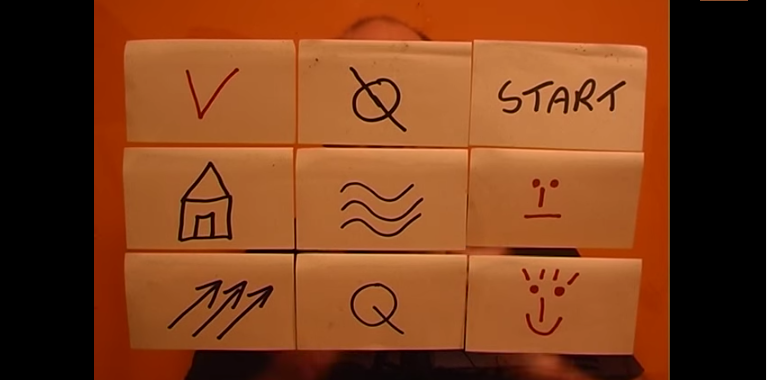
The key, of course, is to think about why this works. How is he able to do this amazing feat?
In an attempt to demonstrate how predictable humans are, psychologist Richard Wiseman created this “mind-reading” challenge. Will he figure you out? Give it a go, and see if you can figure out how it works. Once you’ve thought about it, scroll down to get the answers on how it works and why (click “click here to get the answer” to see how he does it).
WATCH: How Predictable Are You?

Of course, the answer is simple math. If you are on a square, the only way that you will be able to get back to it is on an even number of moves (you move to the right, which is one move. Then you move left back to the original square, which is two moves). We can extend this logic to figure out what space you could not get to in the amount of moves that you are given. In short, if if takes an even amount of moves to get to a square for the first time, and he ends on an odd number, you will not be able to get back to that square.
So the first time that he counts, he goes up to seven.To get to the house (the first one that is removed), it requires an even number of moves, and once at the house, you can only return to the house using an even number of moves (if he ends on an even number). Since he does not end on an even number, we know that you cannot be on the house. Thus, he just as easily could have picked any other card that it takes an even number of moves to get to and removed them (the “apathetic face” or the “Q” also could have been removed).
The same logic, using odd and even numbers, repeat in order to narrow down all the places that you could possibly be. So remember: If you know how to use numbers, you can do a million things in order to fool people.